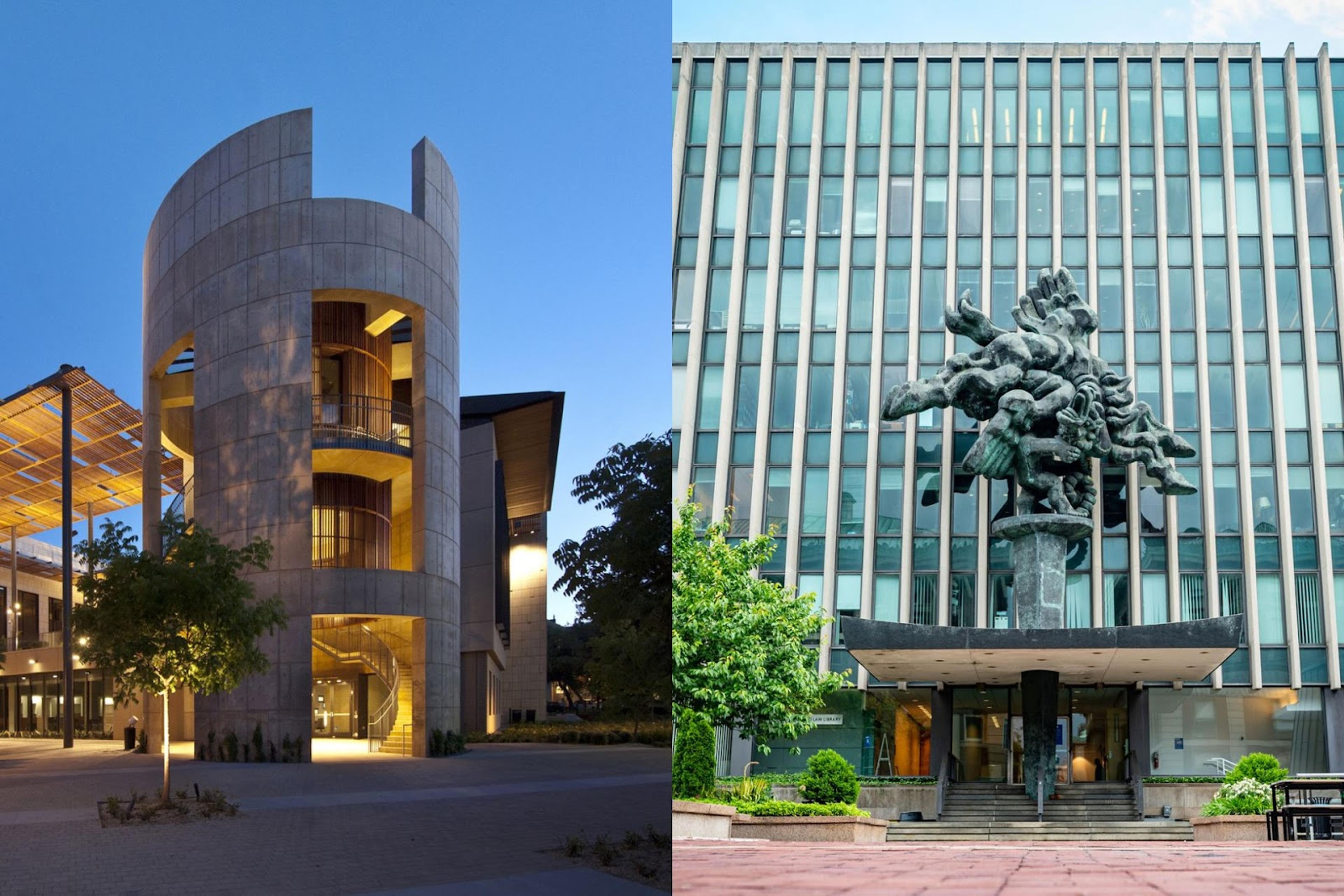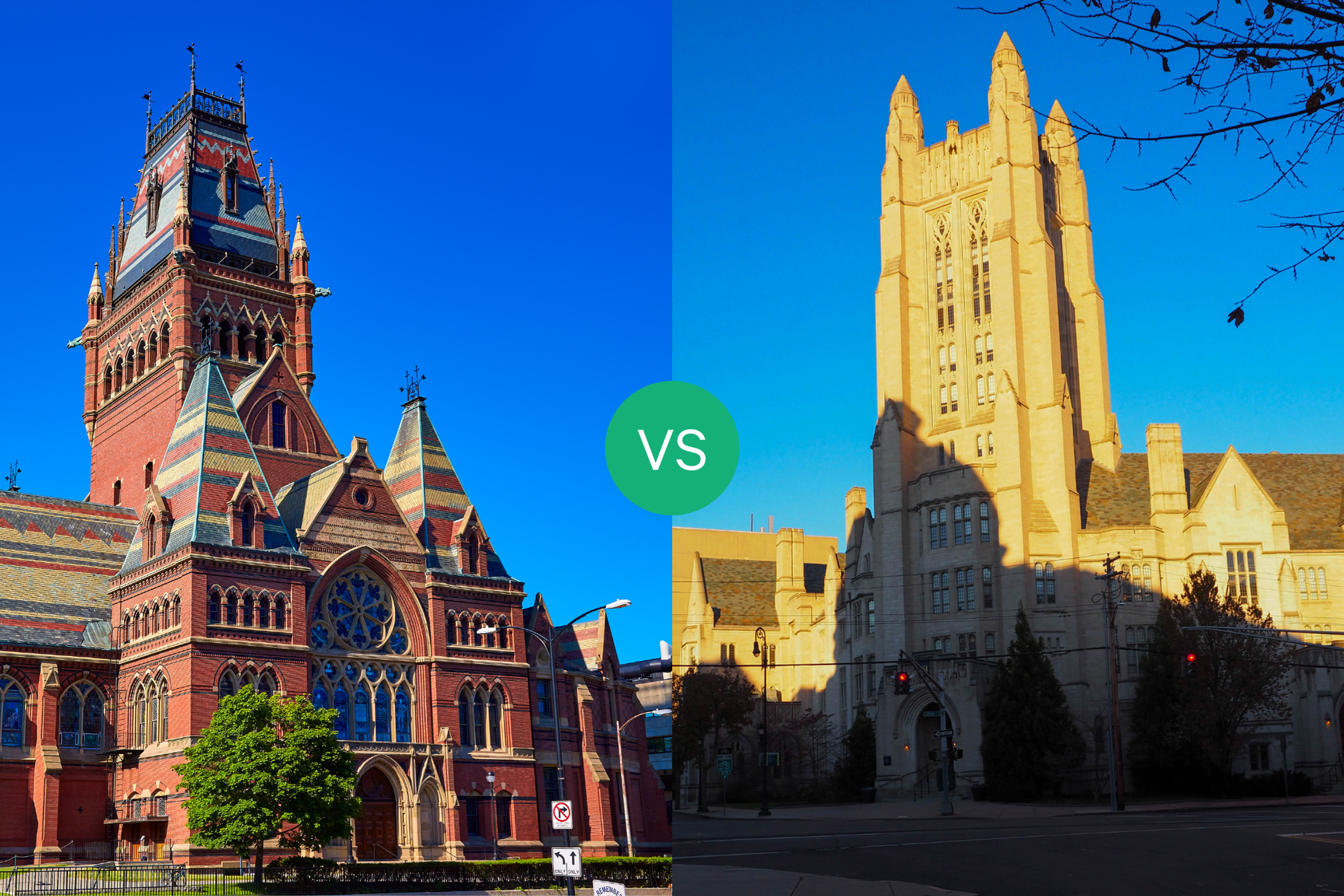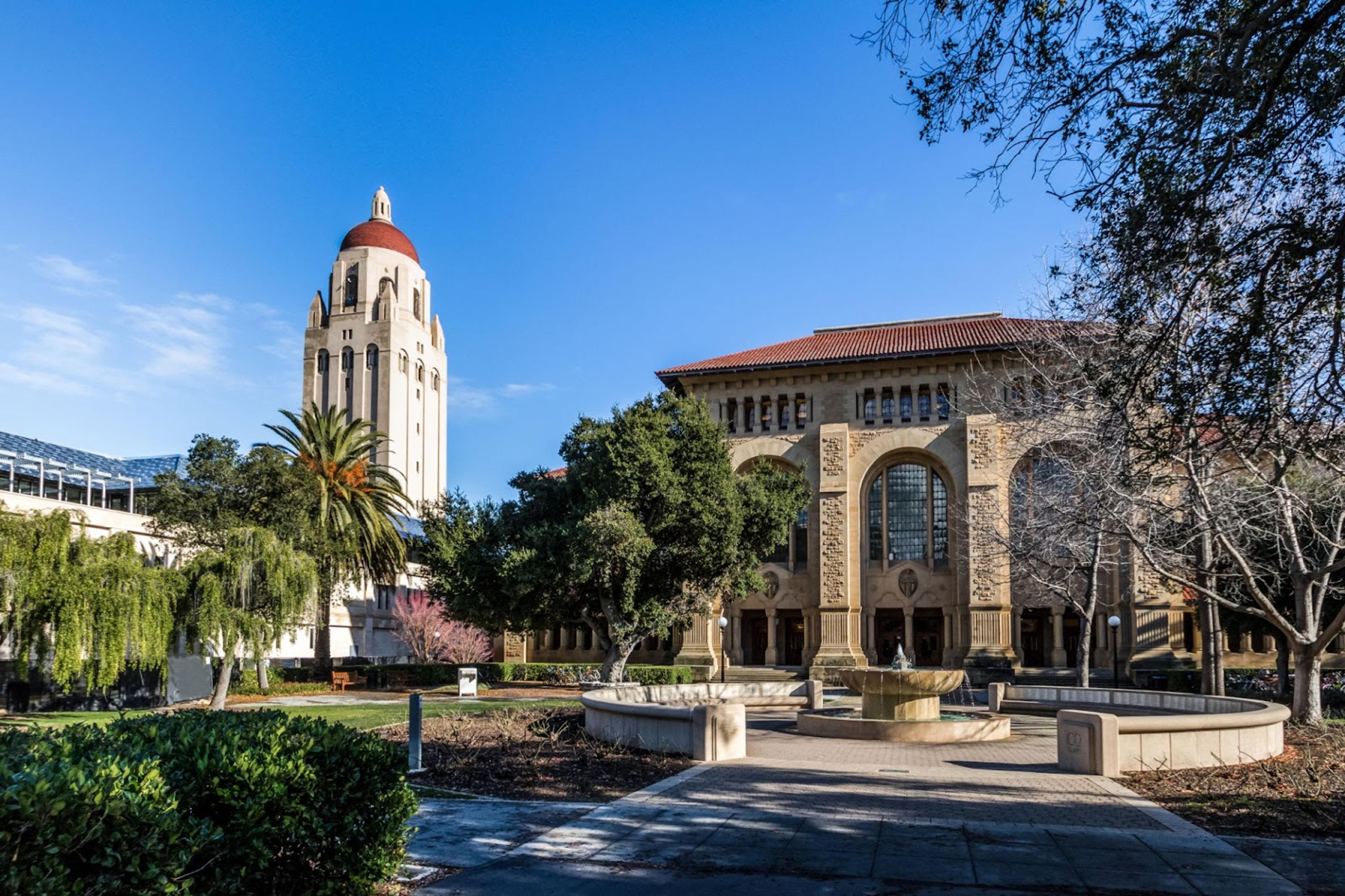University of Michigan--Ann Arbor Law School Vs. University of Texas--Austin School of Law: An In-Depth Comparison
Are you considering pursuing a law degree and wondering which top-tier law school to attend? Look no further than our in-depth comparison of the University of Michigan--Ann Arbor Law School and the University of Texas--Austin School of Law.
Posted June 13, 2025

Table of Contents
Free Event

Featuring Indrani S.
How To Write Outstanding Law School Application Essays
Starting Thursday, September 11
7:00 PM UTC · 60 minutes

Featuring Indrani S.
When it comes to studying law, choosing the right law school can make all the difference in one's career. Among the hundreds of law schools in the United States, the University of Michigan--Ann Arbor Law School and the University of Texas--Austin School of Law are two of the most reputable institutions. Both schools are renowned for their rigorous academic programs, experienced faculty, and impressive alumni networks. However, choosing between them can be challenging, especially for prospective law students who are looking for the best fit for their academic and career goals. In this article, we'll compare and contrast these two law schools in detail and help you make an informed decision.
Austin
One of the key factors that distinguish these two law schools is their location. The University of Michigan--Ann Arbor Law School is based in Ann Arbor, Michigan. With a population of around 121,000, Ann Arbor is a peaceful, suburban city that offers a relaxed lifestyle and access to natural beauty. In contrast, the University of Texas--Austin School of Law is located in Austin, Texas. Austin is the capital city of Texas and has a much larger population of around 950,000. Austin is known for its vibrant music scene, delicious food, and the University of Texas's flagship campus.
Aside from its vibrant music scene and delicious food, Austin is also known for its thriving tech industry. The city is home to many tech companies, including Dell, IBM, and Apple, making it a hub for innovation and entrepreneurship. This provides law students at the University of Texas--Austin School of Law with unique opportunities to work with and learn from legal professionals in the tech industry.
Another notable aspect of Austin is its commitment to sustainability and environmentalism. The city has implemented various initiatives to reduce its carbon footprint and promote eco-friendly practices. For example, Austin has a comprehensive public transportation system that includes buses, trains, and bike-sharing programs. The University of Texas--Austin School of Law also has a strong focus on environmental law, offering courses and clinics that allow students to explore this field in depth.
History and Reputation of the Two Law Schools
Both law schools have a long and rich history. The University of Michigan--Ann Arbor Law School was founded in 1859, making it one of the oldest law schools in the country. Over the years, it has earned a reputation as a top-tier law school that provides students with rigorous academic training, excellent career prospects, and a supportive community of scholars. The University of Texas--Austin School of Law, on the other hand, was established in 1883. It has a history of producing influential legal professionals, including judges, politicians, and scholars, and is known for its innovative and interdisciplinary approach to legal education.
Faculty and Curriculum Comparison: Courses Offered, Teaching Styles, and Professors' Backgrounds
When it comes to faculty, both law schools boast highly qualified and experienced professors who bring diverse perspectives and expertise to the table. The University of Michigan--Ann Arbor Law School has a faculty of 98 members, including renowned experts in various fields of law. The University of Texas--Austin School of Law has a slightly smaller faculty of 80 members, but also has a strong academic reputation and strengths in various fields. Both schools offer a range of courses that cover various legal subjects, such as constitutional law, corporate law, criminal law, intellectual property law, and more. However, they differ in their teaching styles and areas of emphasis.
Admissions Process and Requirements: Difficulty Level, Acceptance Rates, and Application Components
Getting into both law schools is highly competitive, as they receive a large number of applications each year. The admission process for both schools involves submitting an application, transcripts, letters of recommendation, LSAT scores, a personal statement, and an application fee. The admission committees at both law schools review applications holistically and consider various factors, such as an applicant's academic credentials, leadership potential, extracurricular activities, work experience, diversity, and personal statement. Both schools have similar acceptance rates, with the University of Michigan--Ann Arbor Law School accepting around 17% of applicants and the University of Texas--Austin School of Law accepting around 21% of applicants.
Student Life Comparison: Housing Options, Extracurricular Activities, and Campus Culture
As far as student life goes, both law schools offer a range of opportunities and resources to their students. The University of Michigan--Ann Arbor Law School has various housing options, including on-campus dormitories and off-campus apartments, as well as a wide range of extracurricular activities and student organizations. The University of Texas--Austin School of Law also has different housing options, including on-campus graduate apartments and off-campus housing, as well as numerous student organizations and activities. Both schools have a friendly and supportive campus culture, with students engaging in various activities, such as volunteering, competitions, and student government.
Career Prospects for Graduates: Job Placement Rates, Average Salaries, and Alumni Networks
One of the most critical factors to consider when choosing a law school is the career prospects for graduates. Both law schools have a strong track record of producing successful lawyers who go on to prestigious careers in various fields. According to recent data, around 90% of graduates from both law schools are employed within ten months of graduation. The median salaries for lawyers who graduated from both schools are also comparable, with University of Michigan graduates earning around $160,000 per year, and University of Texas graduates earning around $150,000 per year. Both law schools also have strong alumni networks that can provide valuable connections and mentoring opportunities to their graduates.
Cost Comparison: Tuition Fees, Living Expenses, and Financial Aid Availability
Another important factor to consider when comparing these two law schools is the cost of attendance. The University of Michigan--Ann Arbor Law School's annual tuition is around $64,000 for out-of-state students and $55,000 for in-state students. In comparison, the University of Texas--Austin School of Law's annual tuition is around $40,000 for in-state students and $60,000 for out-of-state students. Living expenses, such as housing and food, also vary, depending on the location of the law school. However, both schools offer financial aid packages and scholarships to support students who need it.
Student Resources and Support Services Available at Both Law Schools
In terms of resources and support services, both law schools offer various facilities and programs to help students succeed academically and professionally. The University of Michigan--Ann Arbor Law School has a law library, mock trial program, writing center, clinics, and other resources. The University of Texas--Austin School of Law also provides students with numerous resources, such as a law library, legal clinics, moot court competitions, research centers, and study abroad opportunities. Both schools have career services offices that provide students with job search strategies, interview practice, and networking opportunities.
Diversity and Inclusivity on Campus: Efforts Made by the Schools to Foster a Welcoming Environment for All Students
One aspect that sets these two law schools apart is their commitment to diversity, equity, and inclusion. The University of Michigan--Ann Arbor Law School has a long-standing tradition of promoting diversity and inclusion in all aspects of its academic and social life. The school has various programs and initiatives aimed at fostering a welcoming environment for all students, regardless of their background. The University of Texas--Austin School of Law also has a robust diversity and inclusion program that promotes equal opportunities and respect for diversity. The school has a diverse student body and faculty and hosts various events and programs that celebrate diversity and promote cultural awareness.
Opportunities for Hands-On Learning: Clinics, Moot Court Competitions, and Externships Available to Students
Both law schools provide students with opportunities for hands-on learning through various programs, such as legal clinics, moot court competitions, and externships. These programs allow students to gain practical experience in legal practice, problem-solving, and advocacy. The University of Michigan--Ann Arbor Law School has various clinics that focus on different areas of the law, such as environmental law, entrepreneurship, human trafficking, and more. The University of Texas--Austin School of Law has several clinics that cover various legal fields, such as civil rights, criminal defense, immigration law, and more. Both schools also offer moot court teams and externship programs that allow students to work with judges, lawyers, and government agencies.
Notable Alumni from Both Law Schools: Their Achievements and Contributions to the Legal Profession
Finally, it's worth noting that both law schools have a long list of notable alumni who have made significant contributions to the legal profession and society at large. Some notable alumni of the University of Michigan--Ann Arbor Law School include Supreme Court Justice William Rehnquist, former Attorney General Mike Cox, and current Michigan Governor Gretchen Whitmer. Some notable alumni of the University of Texas--Austin School of Law include Supreme Court Justice Tom Clark, former Secretary of State James Baker, and former Texas Governor Ann Richards.
Public Perception of the Two Law Schools: How They Are Viewed by the Legal Community and General Public
Both law schools enjoy a positive reputation in the legal community and the public eye. According to US News and World Report, the University of Michigan--Ann Arbor Law School is ranked 11th in the country, while the University of Texas--Austin School of Law is ranked 15th. Both schools are highly selective and have a reputation for academic excellence, research, and service to the community. Moreover, both universities have overall strong rankings, great name recognition, and large budgets to support their law schools.
Future Outlook for Both Law Schools: Plans for Expansion, New Programs, or Changes in Leadership
As of right now, both law schools are well-established and financially stable institutions. However, both have plans for growth and improvement. The University of Michigan recently announced a new program focused on technology and law, while the University of Texas has been working to expand its international law offerings. Both schools have also been experimenting with hybrid classes, online courses, and other technological enhancements to improve the learning experience for students. Concerning changes in leadership, both schools have hired new deans, with Michigan recently appointing law professor Sarah Zearfoss to head the school, and Texas appointing Ward Farnsworth, a former dean of the BYU Law School.
Final Verdict: Which Law School Emerges as the Better Option?
After considering all the factors discussed in this article, it is clear that both the University of Michigan--Ann Arbor Law School and the University of Texas--Austin School of Law are excellent options for aspiring law students. Each school has its unique strengths and weaknesses, and the choice ultimately comes down to individual preferences and career goals. Some students may prefer the quieter pace of Ann Arbor and Michigan's overall academic reputation, while others may prefer University of Texas's dynamic and growing intellectual community, particularly if interested in energy or international law. Whatever your decision may be, be sure to carefully consider all the aspects of both law schools before making your final choice.











